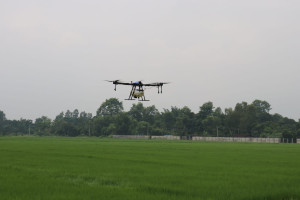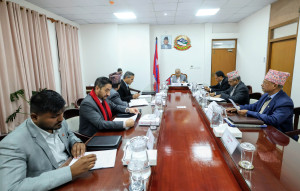Miscellaneous
Reconstruction and its elusive grand narrative
The government has boxed itself into an impossible situation of trying to control everything, something it doesn’t have the required resources or capabilities to do
When the earthquake rattled Nepal April last year, there was a body of readily available information on how to conduct post-disaster reconstruction. The vast body of literature derived from similar tragedies in Haiti, Pakistan, India, Philipines, among others, was supposed to make the post-earthquake recovery relatively straightforward. Yet, it hasn’t.
‘Nepal shouldn’t become another Haiti, and we should build back better’ had become a leitmotif among humanitarian and development actors. In fact ‘Lessons for Nepal’ became clichéd headlines in the many articles that appeared in various platforms and blogs.
These were well-intentioned messages that had to be reinforced, yet almost a year down the road, very little of it seems to have actually been practiced, even by organisations that were preaching it in the first place. Here is why:
1. Preaching is easy: Most organisations who preached lessons bring in very little technical expertise of their own to actually operantionalise it on the ground. Most likely they are making a business case to pitch their tent in the crowded market of humanitarian assistance.
2. Only picking the low hanging fruits: Everyone wants to do the soft part, very few are willing to do the heavy lifting on the ground. If you were to look at brochures and flyers of aid agencies, you can see guidelines, framework and strategy mentioned umpteenth times as achievements. There are very few hard numbers that show the magnitude of assistance benefitting communities on the ground.
3. Very little critical thinking on best practices from other countries: Best practices are overrated. They don’t necessarily factor into the local context and rather bring in templates that don’t work in the geographical terrain or cultural setting of another country. Once a template doesn’t work, agencies go about a frantic improvisation spree. And this doesn’t always bode well.
4. Honesty isn’t the best policy: No one wants to admit to their mistakes. Instead attempts are made to cover up mistakes with more mistakes.
5. Checklist approach: Activities are so routinised that work becomes a checklist. Often in the echo chambers of planning and strategy meetings, officials forget that their work is supposed to benefit the public and merely a tick-box exercise does not necessarily guarantee that the victims are getting help.
6. Compulsion to be seen as doing, not actually doing: There is an unhealthy competition among agencies to be seen as doing something. There is constant peer pressure to churn out stories of assistance and in turn remain visible. As a result, often they get sidetracked from the real reason they are doing what they are doing.
Going back to the leitmotif, it seems the government has internalised one lesson from Haiti well: Don’t let international agencies bypass the government. Consequently in its zeal to not become another Haiti, or so it says, the government of Nepal has boxed itself into an impossible situation of trying to control every dollar and every process—something it doesn’t have human resources or the capability to do.
So here we are almost a year later, still confused about the basics while the experts and the agencies continue to preach over airwaves and through print to communities for whom the earthquake wasn’t the only disaster they have had to endure.
Of course, not everything has been a failure. The government decision to distribute monetary aid during the initial response did help injecting much-needed cash to get families going. The Rs 15,000 cash given directly to affected families for temporary shelter and intial expenses, and the Rs 900,000 and Rs 450,000 to worst affected and affected Village Development ommittees respectively for food, shelter and transportation did make a lot of difference. It is clear that cash handouts work; it also allows communities to take their own initiative to pick up the pieces. The only missing part of the puzzle here is the government’s ability to provide assistance in helping community gain access to the technical know-how on safe reconstruction. Instead of playing a role where needed the most, the current approach is patronising and amounts to the government trying to spoon-feed communities on reconstruction, except that it doesn’t have the ability to do so.
Building back better is ideal if it isn’t limited to just rhetoric, but it is villainous to force affected communities to suffer in the hope for an elusive grand narrative.




 17.12°C Kathmandu
17.12°C Kathmandu









